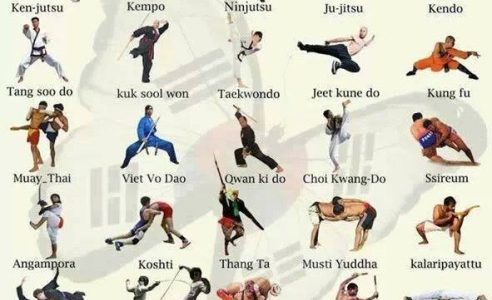Standard Martial Arts Vs. Modern Battle Sports: Understanding The Trick Distinctions
Standard Martial Arts Vs. Modern Battle Sports: Understanding The Trick Distinctions
Blog Article
Post Created By-Valentine Hovgaard
When you think of martial arts, do you lean more toward the typical techniques or the contemporary fight sporting activities? Each course offers one-of-a-kind advantages and experiences, formed by their viewpoints and training approaches. Standard martial arts emphasize individual development and technique, while modern-day battle sports concentrate on competitors and efficiency. Comprehending these distinctions can guide you in choosing the appropriate technique for your journey. However just how do these distinctions manifest in training and ideology?
The Ideology and Background Behind Conventional Martial arts
While many people associate martial arts with physical combat, the approach and background behind traditional martial arts run much deeper. You'll locate that these disciplines highlight individual development, technique, and respect.
Originating from old practices, traditional martial arts were usually created for Self-Defense and spiritual advancement. They embody concepts such as balance, harmony, and self-constraint, leading professionals beyond simple fighting abilities.
As you train, you'll not just learn techniques however also acquire understandings right into the society and values that shaped these arts. The routines and customs, usually passed down with generations, foster a feeling of neighborhood and belonging.
The Affordable Nature of Modern Combat Sports
Modern fight sports have actually changed the landscape of martial arts into a highly competitive arena, where athletes challenge in a test of skill, strategy, and endurance.
You'll see that competitors are often organized with rigorous policies and regulations, making certain justice and safety. https://www.thenationalnews.com/lifestyle/2023/05/28/abu-dhabis-warrior-academy-uses-martial-arts-to-boost-childrens-confidence/ attract large audiences, sustaining the excitement and strength of matches.
https://martial-arts-karate-for-k00998.dgbloggers.com/35501795/demystifying-the-different-fighting-style-designs-from-karate-to-taekwondo educate rigorously, not just for physical prowess however additionally for psychological durability, understanding that every information counts in the ring. The adrenaline rush throughout competitors is palpable, as competitors press their restrictions to declare triumph.
Fans appreciate the athleticism and artistry involved, making contemporary fight sporting activities a thrilling phenomenon that continues to develop and astound enthusiasts worldwide.
Training Methods and Methods: A Comparative Analysis
The affordable ambience of modern-day battle sports needs ingenious training approaches that vary substantially from typical martial arts.
In modern training, you'll focus on details methods, competing, and conditioning, usually making use of drills that mimic real fight scenarios. You'll see a focus on measurable performance and frequent competition to assess your skills.
In contrast, traditional martial arts prioritize kinds, katas, and thoughtful trainings, typically stressing technique and respect over competition.
Training is typically much less extreme and may include recurring technique instead of real-time sparring.
While both strategies construct skill and fitness, modern combat sporting activities give a much more dynamic and adaptable training atmosphere, preparing you for prompt difficulties in the ring or cage.
Pick the path that straightens with your objectives and interests.
Final thought
In choosing between standard martial arts and contemporary battle sports, it really comes down to what you value most. If you're seeking individual growth, self-control, and a feeling of community, traditional arts might be your finest fit. Yet if you grow on competition and real-time obstacles, modern battle sporting activities could be the way to go. Eventually, both paths use unique advantages, so it's everything about aligning your training with your individual goals and rate of interests.
